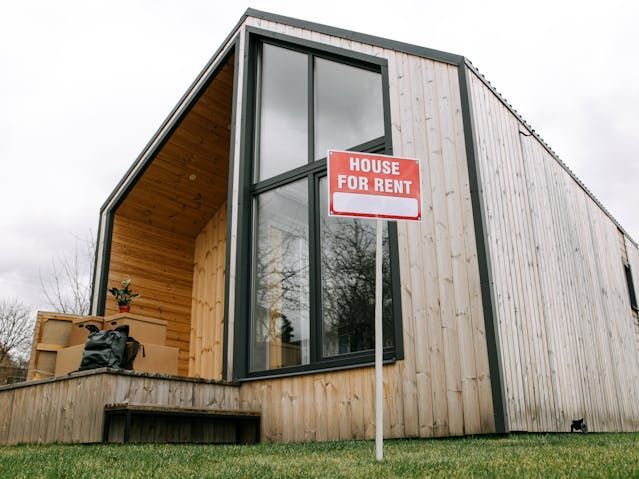Key Takeaways
- Market Forces Shape Rental Prices: Supply and demand, job growth, local developments, and seasonal trends all impact what landlords can charge.
- Data-Driven Pricing is Crucial: Tracking comparable rents, vacancy rates, property types, and resident income helps landlords stay competitive and reduce vacancies.
- Regulations Matter: Awareness of zoning laws and rent control ensures compliance and supports sustainable rental strategies.
Are you struggling to keep up with the changing rental market and unsure if your property’s pricing is still competitive? As a rental property owner, it can be frustrating to see competitors adjust their rates while you hesitate to make changes.
Local market trends can shift rapidly due to factors like neighborhood developments and seasonal demand. Ignoring these changes could lead to lost income or longer vacancies.
If you own property in California, partnering with a knowledgeable team like
Peak Residential
can help you stay informed, competitive, and confident in your pricing strategy.
In this guide, we’ll explain how local market trends impact rental pricing and what you can do to stay ahead.
What Factors Are Driving the Rental Market?
Understanding local real estate trends starts with knowing the key influences. These five factors shape everything from demand to value, helping landlords make smarter rental decisions confidently.
- Supply and Demand: When rental properties are scarce but demand is high, prices naturally increase. Conversely, an oversupply can drive prices down, especially if similar units are competing for the same group of residents.
- Employment Opportunities: Areas with growing job markets often attract new residents, which can increase demand for housing. Proximity to business hubs, tech parks, or industrial zones typically leads to higher rental values.

- Population Growth: A rising population means more potential residents looking for homes. Fast-growing cities and suburbs often experience stronger rental markets and upward trends in pricing.
- Local Development Projects: New schools, shopping centers, parks, or transportation upgrades can boost a neighborhood’s appeal, directly impacting rental demand and property value.
- Economic Conditions: Broader economic trends like inflation, interest rates, and consumer confidence can influence how much people are willing and able to pay for rent in your area.
How Local Trends Affect Rental Pricing
Your rental price isn’t isolated. These eight factors show how local real estate activity impacts your pricing power to keep you ahead.
1. Comparable Rental Rates
What are similar properties charging in your area? That’s your starting point. Rental rates for nearby homes, especially those with similar features, directly influence what you can reasonably ask for your own unit.
In places like Sacramento and surrounding areas, landlords who monitor local listings stay better positioned to price competitively and attract quality residents without underpricing their rental.
2. Vacancy Rates
Why do vacancy rates matter? Because they reflect current demand. If your neighborhood in California has high vacancies, it may signal a renter’s market where lower pricing is necessary to fill units.

On the other hand, low vacancy rates mean higher demand, which gives you room to increase rent without scaring off potential residents.
3. Property Type Popularity
Certain types of properties rent faster depending on local preferences. In suburban California, single-family homes often attract long-term residents looking for space and privacy.
Multifamily units may be more popular in dense urban zones. Knowing which type is trending helps you position your property better and decide whether to adjust pricing or improve amenities.
4. Neighborhood Desirability
How attractive is your neighborhood to potential residents? Safety Standards, nearby schools, and local amenities all contribute to perceived value.
If your property is in a walkable area with good public services and shopping centers, you can typically charge more. Desirability isn’t fixed—it evolves with time, so keeping track of changes is key.
5. Seasonal Shifts
When is the best time to list your rental? Timing matters more than many landlords think. In most parts of California, especially around Sacramento, summer brings higher resident activity due to school breaks and job changes.
That bump in demand can support stronger pricing. Slower seasons like winter may require slight rate adjustments to stay competitive.
6. New Construction Volume
What’s being built nearby, and how might it affect your property’s value? New apartment complexes or housing developments in your area can increase supply, giving residents more choices.

If you’re in a growing California neighborhood, keeping an eye on construction helps you anticipate shifts in competition and adjust your rental price before it impacts your bottom line.
7. Resident Income Trends
How much are people in your area earning? If local wages are on the rise, residents are more likely to afford higher rents. In contrast, stagnant income growth may limit your ability to increase rates.
Following income trends in your city helps you set realistic pricing that meets the market without risking extended vacancies.
8. Zoning and Regulation Changes
Are there any recent or upcoming changes in local policies? Things like zoning updates or rent control ordinances can directly affect your pricing strategy.
In many parts of California, understanding local legislation helps landlords avoid compliance issues and plan for long-term profitability. Always stay updated on what your city or county is proposing or enforcing.
Bottom Line
Keeping your rental pricing in sync with the local market isn’t guesswork—it’s strategy. By understanding what shapes demand in your area, you position your property for long-term success.
Peak Residential, Inc. in California understands these market shifts inside and out. Their local expertise can help you evaluate your pricing, reduce vacancy risks, and maximize returns. Reach out to us today to discuss your options and find a rental strategy that fits your property and goals perfectly.
















